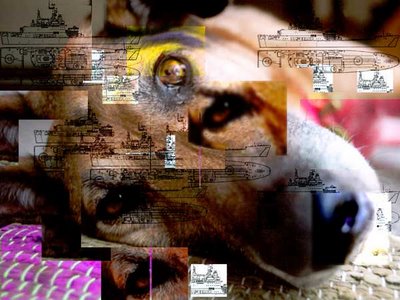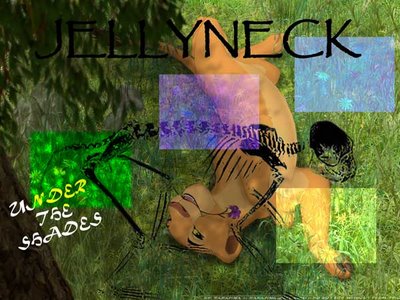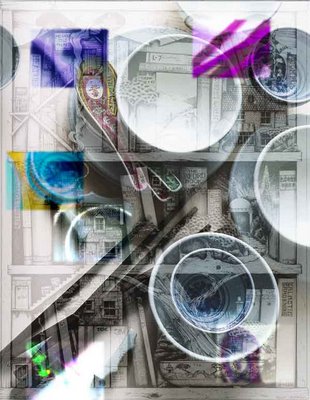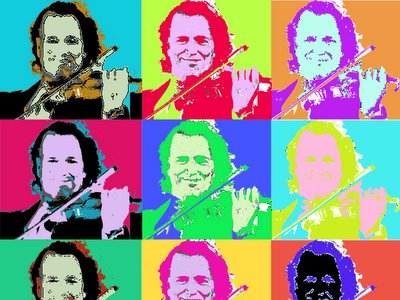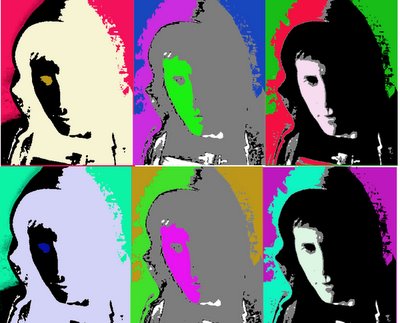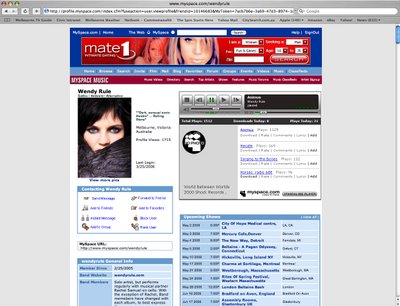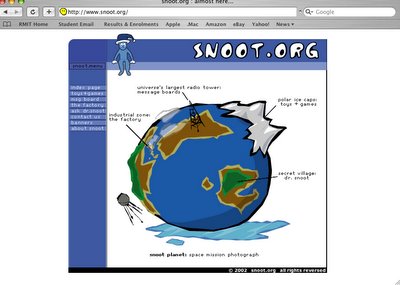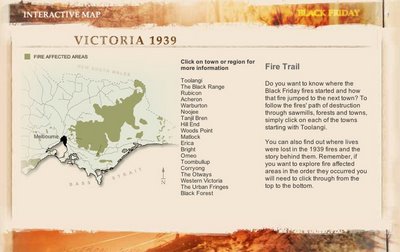'MySpace' by Cameron
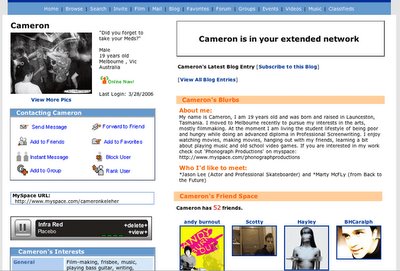
It was originally an online storage website before it became the My Space we know today founded in July 2003 by Tom Anderson and Chris DeWolfe. The site was bought by Fox Broadcasting in July 2005 for $580 million so its nice to know when we use MySpace we are supporting an American corporation.
Once you have signed up to the site you have to write a profile about yourself, there is no limit to how much you can write. The standard profile has a ‘about me,’ ‘who I would like to meet,’ ‘general interests,’ ‘basic details,’ ‘profile picture’ and ‘blogs’. This creates the allusion that you have your own personal ‘space’ among the billions of Internet and MySpace users. This is perhaps were the addiction begins were people hope to escape the troubles of the world. You then add other profiles to try and build up a network of friends. Then you and your friends put comments on each other’s profiles, which are conversational, statements, well wishes or complements. You can also comment on peoples profile pictures. This reflects the real world of social popularity, the more friends you have and comments the better you are, so it’s not much of an escape.
The good thing about MySpace is that gives a chance for independent artist such as musicians and filmmakers to publicly show their work in a cross media online environment. Filmmakers can put their films and screening dates on a ‘filmmakers profile’. Musicians can put their music on their ‘music profile’ and promote upcoming gigs. People can upload these films and tracks onto their own profile, which provides even more exposure.
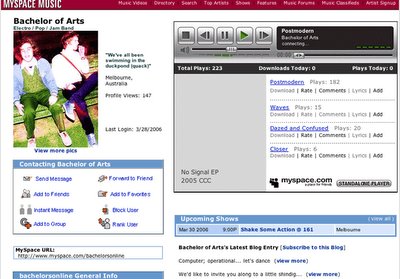
The problem with MySpace is that you are able to customize your profiles text, background, images etc. using html coding. Most users aren’t experienced with html coding so when viewing their profiles it causes web browsers to run slow or even crash because they put to many high bandwidth objects such as videos and flash in their profiles. Some profiles are so badly coded that the text doesn’t even appear and has to be read by highlighting it.
It seems nothing is sacred in today’s world of technology. MySpace users provide detailed information of their lives in ‘cute’ surveys and write online diaries. People’s written conversations are open to every one to view ranging from love problems to meaningless chitchat. Although it’s your own space anyone can come in and look and comment. This has caused many problems in schools resulting in malicious gossip about students resulting in the banning of the website. Some schools have even tried to ban students from using the site at home.
Although MySpace is rough around the edges it is an excellent way to get your work viewed. It is also a fun way to have written conversations with strangers and a good way to meet unique individuals that you wouldn’t normally meet. It’s also a good way to keep in touch with old friends. MySpace is criticized for pervert and petafile offences but that will always happen online on any website. But MySpace breaks its own rules when in its online agreement that user must agree with before signing up. It states that you are not allowed to upload offensive material. This happens anyway but MySpace does nothing about it. MySpace can be addictive but if you don’t take it to seriously and see it for what it is the networking site can be fun at times.
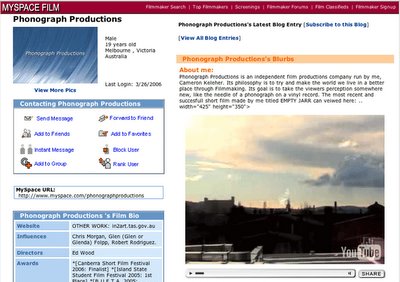
• For an example of a Filmmaker MySpace profile follow this link:
http://www.myspace.com/phonographproductions
• For an example of a Music MySpace profile follow this link:
http://www.myspace.com/bachelorsonline
• For an example of a Standard MySpace profile follow this link:
http://www.myspace.com/cameronkeleher
Read more!
